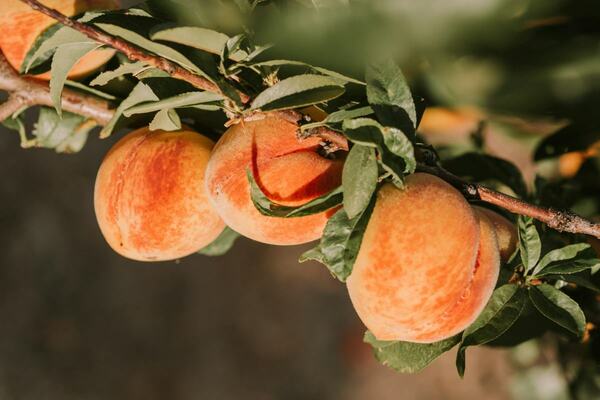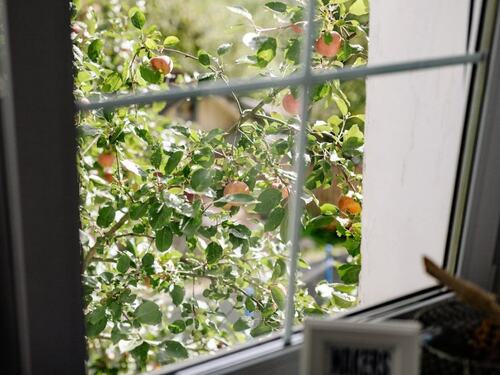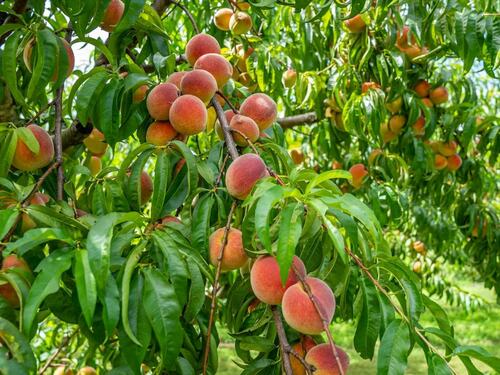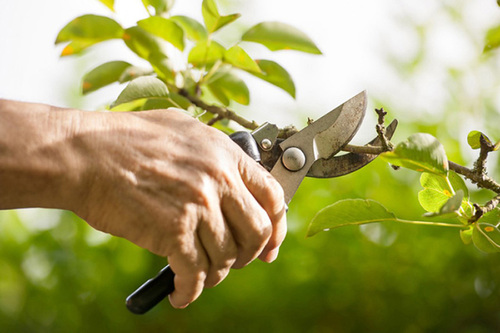How to Care for Fruit Trees in the Summer

Photo by Jared Subia on Unsplash
How to Care for Fruit Trees in the Summer
Summer is here, and fruit trees in your yard probably have abundant new growth, and the fruits are probably sizing up nicely. At this time of year, it is imperative that you keep up with fruit tree care so you can avoid insect infestation, disease, and weather-related problems.
Here are some things to remember when caring for your fruit trees this summer.
Inspect Frequently

An Apple Tree is Visible Through a Window - Photo by Yan Krukau
Examine your fruit tree bark, branches, leaves, and developing fruits often. Look for signs of insects and diseases and apply suitable organic controls. It is usually easier to control pests if you act before or just as they are getting established than to control them after they have caused lots of damage.
Water Often
Fruit trees need water to develop their fruit properly. It is best to water deeply and infrequently rather than frequently and shallowly. Water trees in sandy soils every 1 to 2 weeks, providing enough water so that it sinks 2 feet into the soil. in clay soils, water every 2 to 3 weeks. The frequency will vary depending on weather conditions. You can water less during rainy periods and more during droughts. For young trees, make a moat around the base of the tree so the water stays in the root zone, and on older trees, water at the drip line of the tree.
Control Weeds with Mulch
It is important to keep the base of your fruit trees weed-free. Spread a 2- to 3-inch-thick layer of organic mulch, such as pine straw or bark mulch, over the root zone, but keep it a few inches away from the trunk. The mulch creates a "no-mow" ring around the tree trunk so the tree is less likely to be damaged by a lawn mower or string trimmer. On younger trees, mulch reduces weed competition and keeps the soil moist for longer, reducing the need to water. As organic mulch also breaks down gradually, the mulch provides organic matter to the soil.
Fertilize Trees if Necessary
This takes some thought. How much to fertilize your fruit tree depends on how well the tree is growing. Adding compost around the base of young fruit trees (but a few inches away from the trunk) and at the drip line of older trees is always a good practice. Base any other fertilizing on a soil test and the growth of your tree. For example, for nonbearing apple trees, yearly shoot growth should be between 24 to 36 inches; for pears, 12 to 26 inches; and for peaches, 16 to 24 inches. In fruit-producing apple trees, shoot growth should be between 12 to 24 inches; for pears, 6 to 12 inches; and for peaches, 10 to 18 inches. The soil pH for most fruit trees should be around 6.5 to 7.0. It is best to apply fertilizer early in the summer season. Do not fertilize in late summer or you'll stimulate new growth that may be winter injured, and tree hardening off will be delayed for winter.
Fruit Thinning

Branches Loaded with Clusters of Peaches - Photo by Mark Stebnicki
Most fruit trees produce more fruit than the tree can support. While the tree will naturally shed some fruit during an early summer drop, you may need to thin more than nature does. Thinning fruits eliminates diseased or insect-infested fruits, reduces fruit load, prevents branches from breaking during the summer from the heavy weight of the excessive fruits, and prevents alternate-year bearing, which is common in some fruit tree varieties. Wait until after the natural drop to thin your fruits. The fruits should be about 1 inch in diameter when you're thinning them. Leave the largest, healthiest-looking fruit on the tree, and favor fruits located toward the outside and upper portions of the tree. These will receive the most sun and produce the best-quality fruits. During a light bearing year, thin less. Thin more during heavy fruit-set years.
Here are some spacing guidelines for thinning fruits on common tree fruits.
- Apricots, Cherries, and Plums: Thin to 2 to 4 inches apart
- Peaches and Nectarines: Thin to 3 to 5 inches apart
- Apples and Pears: Thin to one or two fruits per cluster, spaced 6 to 8 inches apart
Spread Branches
On young fruit trees, encourage strong branch or crotch angles by spreading the branches. Branches spread to a 45-degree angle or greater from the trunk will be stronger and produce less vegetative growth and more fruit. You can use wooden spreaders placed between narrowly angled branches to slowly force them apart, or take fishing line with weights attached and tie them to ends of smaller branches needing to grow more horizontally. After one year, the branches will be naturally be growing at the correct angle, and the spreaders can be removed.
Pruning
There are several approaches to summer pruning of fruit trees, and all are dedicated to detecting what needs correcting. Here are some recommendations:
Despite being considered "off-season pruning," summer pruning of fruit trees in a home orchard has its place. For example, summer pruning may be necessary to repair damaged tree limbs. If a branch is broken by the wind or by a heavy load of fruit, then prune back the ragged edges, making a smooth cut that leaves no stubby stump.
Summer pruning, or pinching, of tender new branches is also recommended to encourage huskier growth in vigorously vegetative trees. This discourages long, weak, "leggy" growth from flourishing. Summer pinching helps manage the tree’s overall size as well, which is especially handy if your dwarf fruit trees tend to be more on the robust side.
There are many reasons to consider summer pruning of fruit trees, but the ultimate purpose remains the same: Detecting what needs correcting.

Hand Pruners being Used to Trim a Small Branch
When to consider summer pruning:
Pruning should be done in July and early August. This is the active growing season, as growth slows down in fall. This also helps in situations where a harsh winter and spring may delay new growth.
The following fruit trees are commonly considered for summer pruning. These trees tend to grow vigorously. They may reach their maximum height sooner than other fruit trees, but at the expense of sturdy, stocky limbs. They may also develop light and airflow issues that pruning addresses.
- Peach trees
- Nectarine trees
- Japanese plum trees
Goals of summer pruning:
- Removal of dead, damaged, or diseased limbs before they become stress factors for your tree. Be sure to remove crossing or rubbing limbs and limbs that grow inward toward the tree’s center.
- Creating a sturdy structure. As noted previously, long, weak growth should be pinched back. Hand-pinch or prune approximately 3 inches off the end of each soft, leafy shoot. Repeat in late summer if side shoots grow rapidly outward.
Benefits to summer pruning of fruit trees:
- Enhances light exposure. In young fruit trees, light improves the development of fruiting wood. In mature fruit-bearing trees, light improves fruit size and quality. In fruit trees of all ages, proper light and air circulation reduce the risk of fungal disease.
- Encourages sturdier branch development. With pruning, your tree will have stockier, sturdier growth, providing better support for fruit in future seasons.
- Provides an opportunity to check on tree status to address pest and disease issues, ideally before they become bigger problems. Tree limbs are spread if they are growing too vertically, and any suckers and watersprouts that may have appeared can be removed.
Things to avoid when summer pruning:
- Avoid pruning if rain is in the immediate forecast. Rain can aggravate disease elements, like fungal spores, that may take advantage of fresh pruning cuts. Wait for the weather to be more cooperative.
- Avoid heavy pruning in summer. Summer pruning should merely maintain the structure that you define with heavier pruning in winter or early spring. Heavy pruning should always be saved for when fruit trees are dormant and less prone to stress.
- Avoid pruning too late. It may seem backward, but pruning actually encourages growth. If this growth is encouraged too late in the season, it could be at risk of winter injury. If you miss your "summer pruning window," just wait to prune in the winter or early spring instead.
Please note: Do not wait to remove damaged, dead, or diseased limbs or suckers and watersprouts. These should be removed as soon as possible.
With these things in mind and pruners in hand, you are ready for summer pruning of your prized fruit trees. Arborist Now is here to help when summer fun takes precedence over summer tree pruning. We offer fruit tree pruning services in San Francisco, Millbrae, and surrounding areas. Just give us a call!
Originally published on July 5, 2017.





